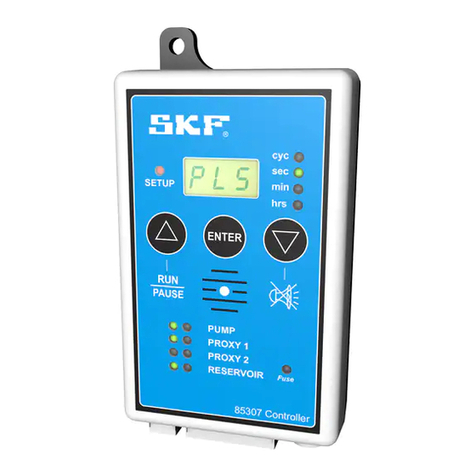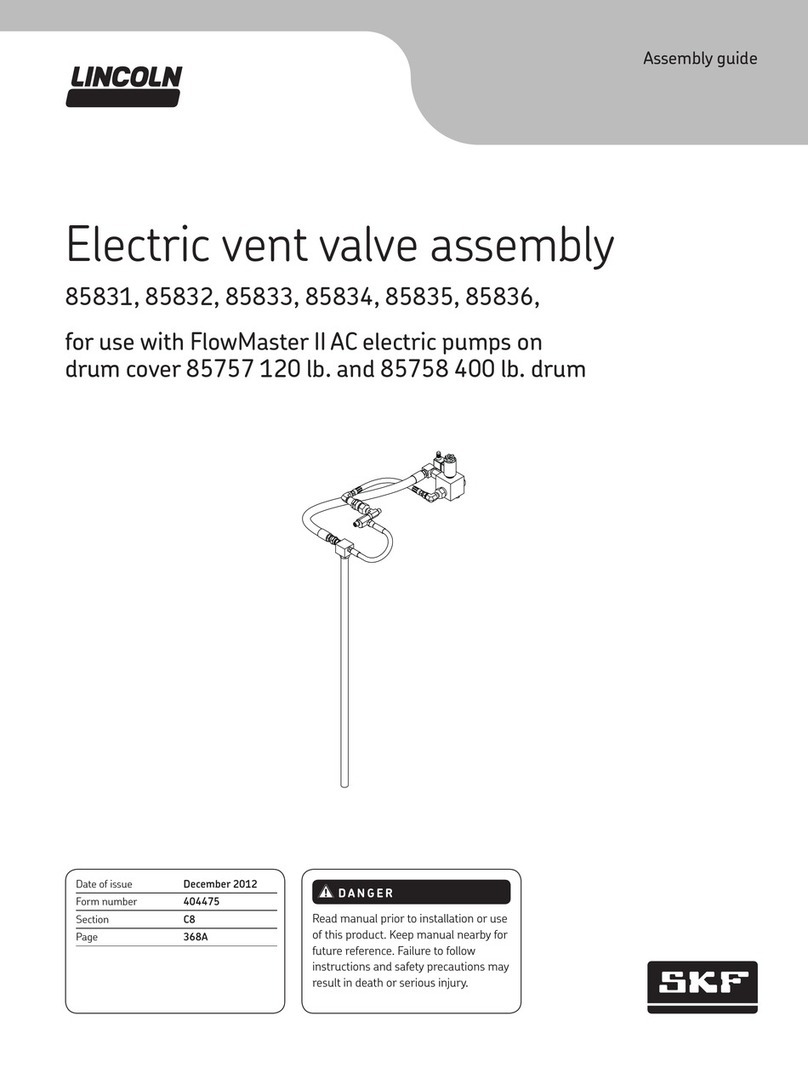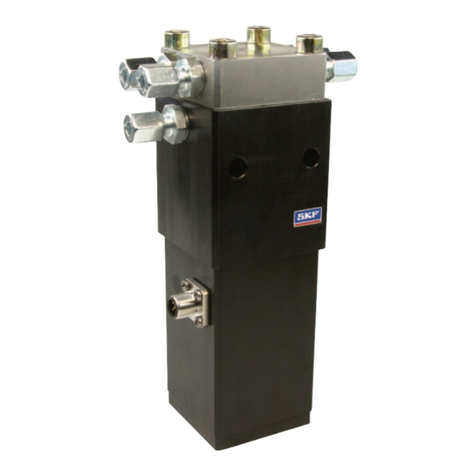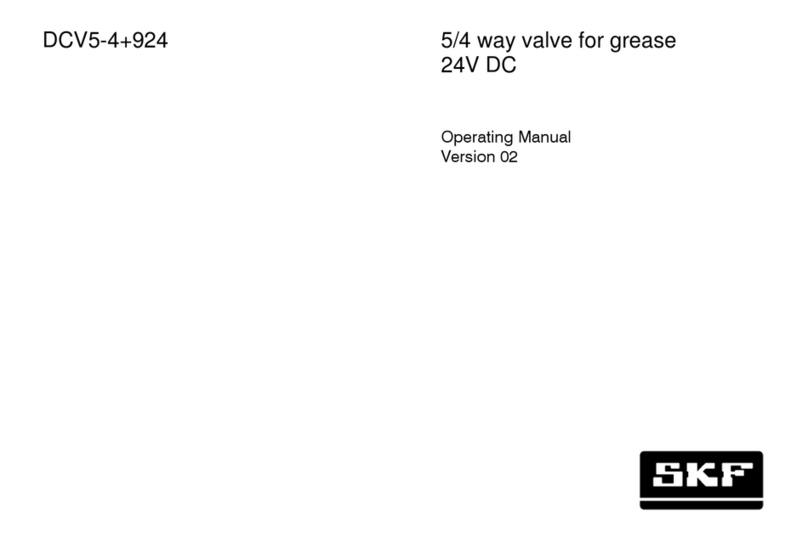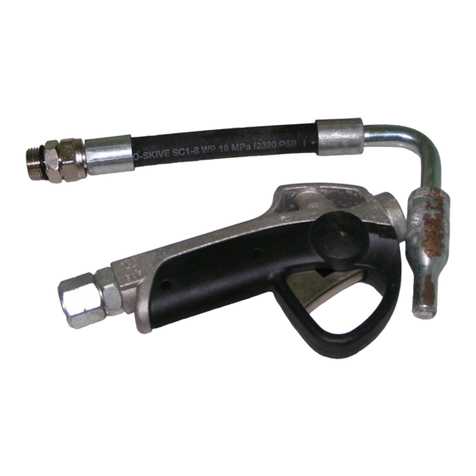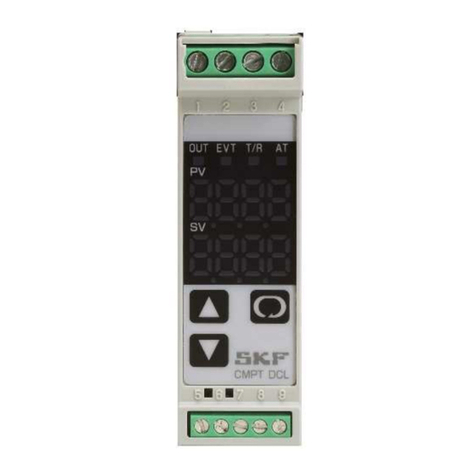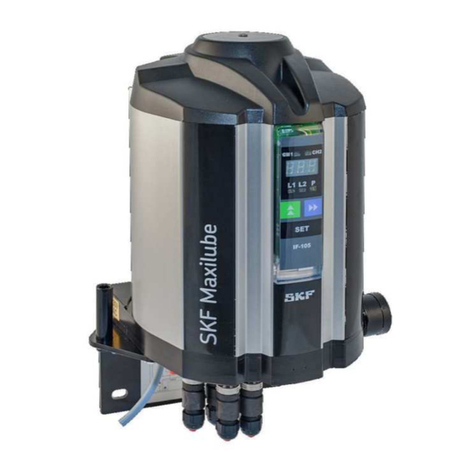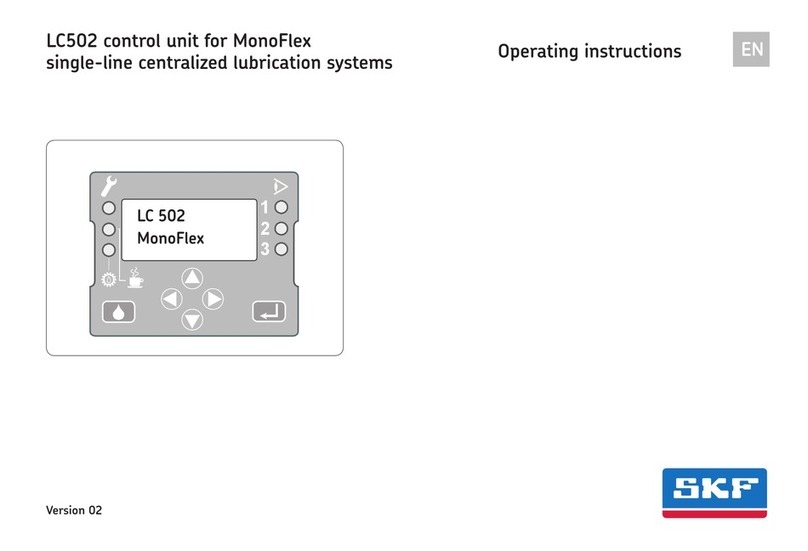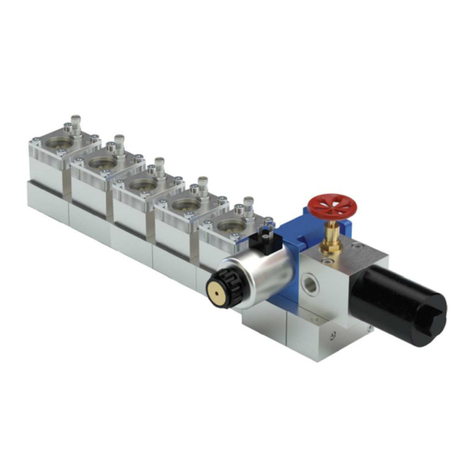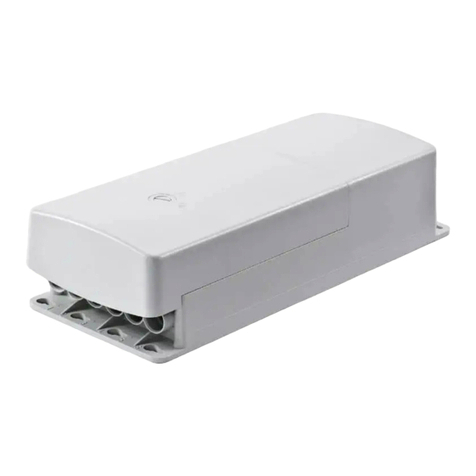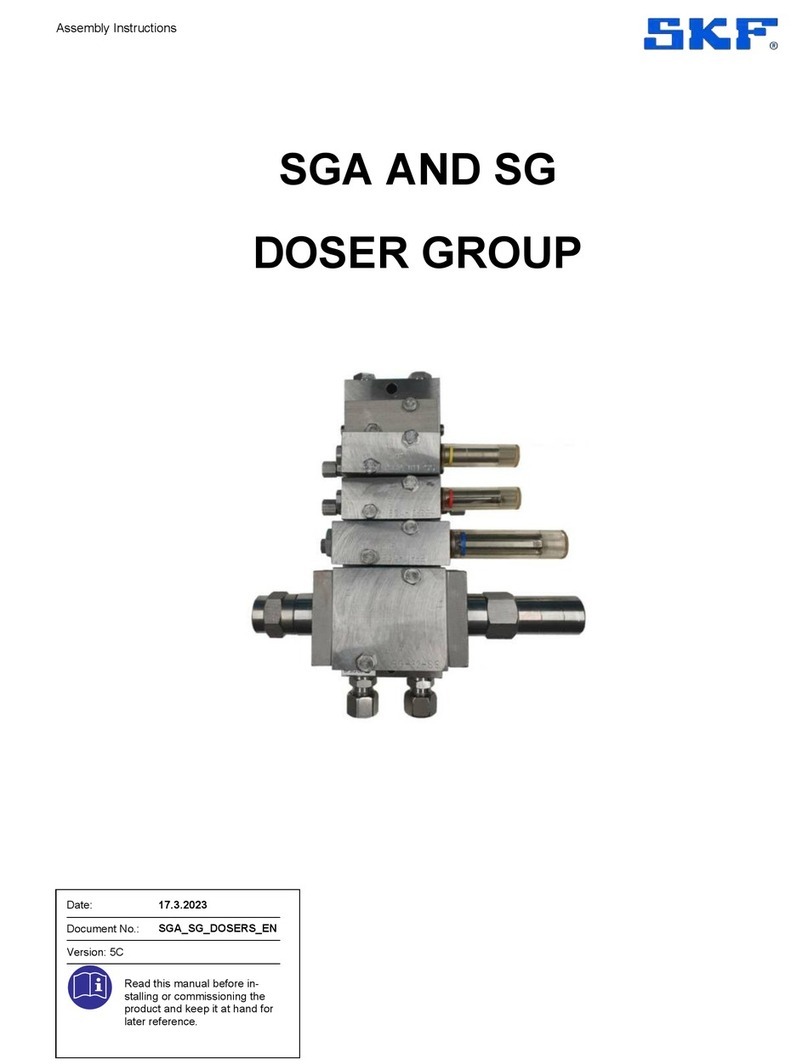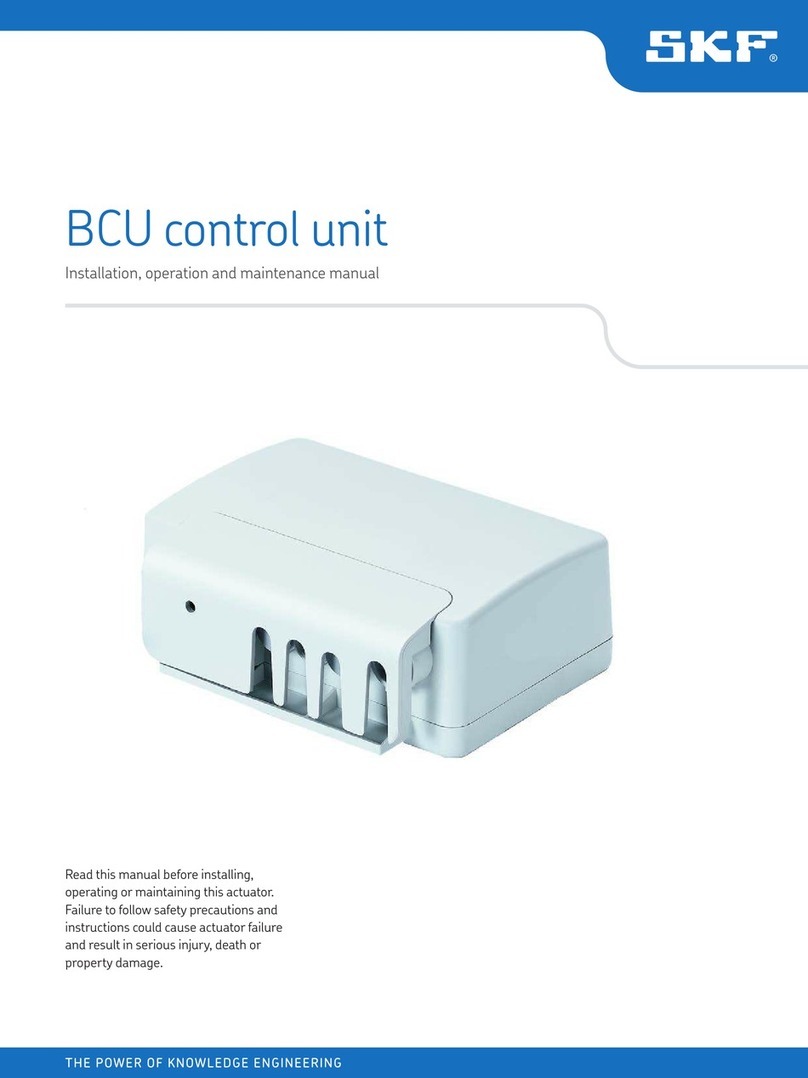
Page 3 EN
Table of contents
Table of contents
Information concerning Declaration of
Conformity 4
Explanation of symbols and signs5
1. Safety instructions 6
1.1 Intended use 6
1.2 Authorized personnel 7
1.3 Electric shock hazard 7
1.4 System pressure hazard 7
2. Transport, delivery, and storage 8
2.1 General information 8
2.2 Electronic and electrical devices 8
2.3 General notes 8
3. Overview of device series 10
3.1 Distinguishing features 10
3.2 LCG2-A (24 V DC design) 10
3.3 LCG2-B (72 V DC to 110 V DC design) 12
4. Design and function 14
4.1 Design 14
4.2 Function 16
4.2.1 Curve sensor special mode 17
4.2.2 Curve-dependent spraying/calibration 18
4.2.3 Curve-dependent spraying,
outside curve 19
4.2.4 Curve-dependent spraying,
both sides 19
4.2.5 Setting spray interval time tPfor curve-
dependent spraying 19
4.2.6 Time- or distance-dependent spraying 20
4.2.7 Time-dependent spraying 21
4.2.8 Distance-dependent spraying 22
4.2.9 Setting the spray time tS 23
4.2.10 Setting the pulse voltage range on
LCG2-B 23
4.3 Spray valve actuation based on curve
direction and direction of travel 24
5. Assembly 25
5.1 General information 25
5.2 Setup and installation 25
5.3 Installation of LCG2-A and LCG2-B
curve sensor control units 26
5.3.1 Mounting equipment 26
5.3.2 LCG2-A mounting diagram 27
5.3.3 LCG2-B mounting diagram 28
5.4 Electrical connection 28
5.5 Customer connection of LCG2-A 29
5.6 Customer connection of LCG2-B 30
5.6.2 Electrical connection illustration
LCG2-A01; LCG2-A02; LCG2-A03 31
5.6.3 Electrical connection illustration
LCG2-B01; LCG2-B02; LCG2-B03 33
5.7 Curve function of LCG2-A01/B01
curve sensors 35
5.7.1 Using curve sensor LCG2-A01/ B01 36
5.7.2 Using curve sensor
LCG2-A02/A03/B02/B03 37
6. Operation 38
6.1 Adjustment elements of the curve
sensor control units 38
6.2 Operating modes of curve sensor control
units LCG2-A01, -A02, -B01, -B02 41
6.2.1 Curve-dependent spraying
LCG2-A01, -A02, -B01, -B02 42
6.2.2 Time-dependent spraying
LCG2-A01, -A02, -B01, -B02 43
6.2.3 Time- and curve-dependent spraying
LCG2-A01, -A02, -B01, -B02 44
6.2.4 Distance-dependent spraying
LCG2-A01, -A02, -B01, -B02 45
6.2.5 Distance- and curve-dependent spraying
LCG2-A01, -A02, -B01, -B02 46
6.3 Operating modes of curve sensor
control units LCG2-A03, -B03 47
6.3.1 Curve-dependent spraying 47
6.3.2 Time-dependent spraying 48
6.3.3 Time- and curve-dependent spraying 49
6.3.4 Distance-dependent spraying 50
6.3.5 Distance- and curve-dependent
spraying 51
7. Commissioning 52
7.1 Commissioning procedure 52
8. Decommissioning and disposal 52
8.1 Temporary shutdown 52
8.2 Permanent shutdown 52
9. Maintenance and service 53
10. Operational malfunctions 54
10.1 General information 54
10.2 Troubleshooting 54
11. Technical data 59
11.1 General characteristics 59
11.2 Electrical characteristics 63

